
The Society of Jesus, also known as the Jesuit Order or the Jesuits, is a religious order of clerics regular of pontifical right for men in the Catholic Church headquartered in Rome. It was founded in 1540 by Ignatius of Loyola and six companions, with the approval of Pope Paul III. The society is engaged in evangelization and apostolic ministry in 112 nations. Jesuits work in education, research, and cultural pursuits. Jesuits also conduct retreats, minister in hospitals and parishes, sponsor direct social and humanitarian ministries, and promote ecumenical dialogue.

The Guarani are a group of culturally-related indigenous peoples of South America. They are distinguished from the related Tupi by their use of the Guarani language. The traditional range of the Guarani people is in what is now Paraguay between the Paraná River and lower Paraguay River, the Misiones Province of Argentina, southern Brazil once as far east as Rio de Janeiro, and parts of Uruguay and Bolivia.

Misiones is one of the 23 provinces of Argentina, located in the northeastern corner of the country in the Mesopotamia region. It is surrounded by Paraguay to the northwest, Brazil to the north, east and south, and Corrientes Province of Argentina to the southwest.

The Viceroyalty of Peru, officially known as the Kingdom of Peru, was a Spanish imperial provincial administrative district, created in 1542, that originally contained modern-day Peru and most of the Spanish Empire in South America, governed from the capital of Lima. Along with the Viceroyalty of New Spain, Peru was one of two Spanish viceroyalties in the Americas from the sixteenth to the eighteenth centuries.
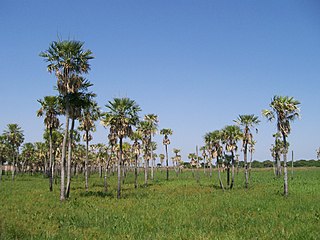
Chaco, officially the Province of Chaco, is one of the 23 provinces in Argentina. Its capital and largest city, is Resistencia. It is located in the north-east of the country.
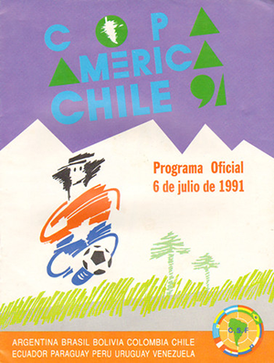
The 1991 Copa América football tournament was hosted by Chile, from 6 to 21 July. It was organized by CONMEBOL and all ten member nations participated.

The Revolt of the Comuneros was a series of uprisings by settlers in Paraguay in the Viceroyalty of Peru against the Spanish authorities from 1721 to 1725 and 1730–1735. The underlying cause of the unrest was strong anti-Jesuit feelings among the Paraguayans and dislike for any governor seen as favoring the Jesuits. In the resumption of the revolt in 1730, economic issues came to fore as well. The rebel organization split in its second phase, as the rural poor and the urban elite each formed their own factions with similar grievances against the Jesuits, but incompatible politics. Paraguay had an unusually strong tradition of self-rule; the colonists did not have a tradition of strict obedience to everything the Spanish Crown's governor decreed. This independence helped push the revolt forward.
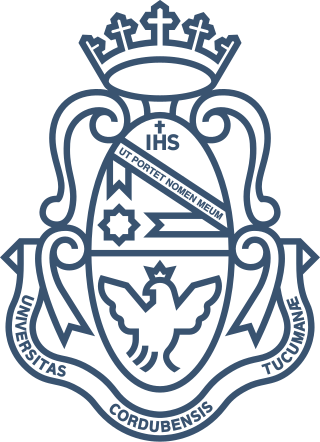
The National University of Córdoba, is a public university located in the city of Córdoba, Argentina. Founded in 1613, the university is the oldest in Argentina, the third oldest university of the Americas, with the first university being the National University of San Marcos and the second one, Saint Thomas Aquinas University.

Hernando Arias de Saavedra, commonly known as Hernandarias, was a soldier and politician of criollo ancestry. He was the first person born in the Americas to become a governor of a European colony in the New World, serving two terms as governor of Governorate of the Río de la Plata, 1597–1599 and 1602–1609, and one of the Governorate of Paraguay 1615–1617.

The Roman Catholic Archdiocese of the Blessed Assumption is an ecclesiastical territory or diocese of the Roman Catholic Church in Paraguay.

The Mercosur Parliament, known also as Parlasur, or Parlasul, is the parliamentary institution of the Mercosur trade bloc. It is composed of 81 MPs, 18 from each member states of the bloc – Argentina, Brazil, Paraguay and Uruguay – and 9 from applying member Venezuela. Associate members – Bolivia, Chile, Colombia, Ecuador and Peru – may also hold seats in the Parliament, but with no voting powers.
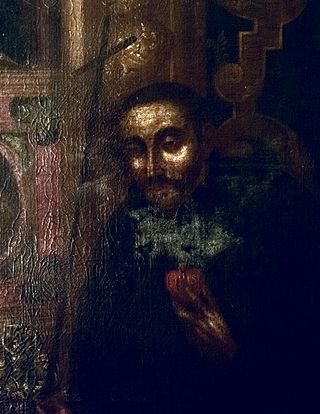
Antonio Ruiz de Montoya, SJ was a Jesuit priest and missionary in the Paraguayan Reductions.
Juan de Atienza was a Spanish Jesuit missionary in South America.
Long before Spanish conquistadors discovered Paraguay for King Charles V in 1524, semi-nomadic Chaco Indian tribes populated Paraguay's rugged landscape. Although few relics or physical landmarks remain from these tribes, the fact that nearly 90 percent of Paraguayans still understand the indigenous Guarani language is testament to Paraguay's Indian lineage. The Spanish conquistadors arrived in 1524 and founded Asunción in 1537. Paraguay's colonial experience differed from that of neighboring countries, such as Bolivia and Argentina, because it did not have gold and other mineral deposits that the Spanish were searching for. Because of its lack of mineral wealth and its remoteness, Paraguay remained underpopulated and economically underdeveloped. Early governor Domingo Martínez de Irala took an Indian wife and a series of Indian concubines and encouraged other male settlers to do likewise. Intermarriage fused Indian culture with that of the Europeans, creating the mestizo class that dominates Paraguay today. From the beginning, however, Indians retained their Guaraní language, even as Spanish influence was accepted, and embraced, in other aspects of society.

Paraguay–Spain relations are the current and historical relations between Paraguay and Spain. Both nations are members of the Association of Spanish Language Academies and the Organization of Ibero-American States.
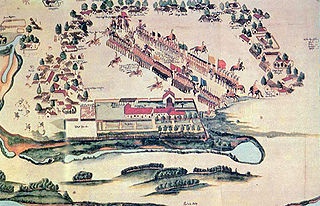
The Battle of Mbororé, which occurred on 11 March 1641, was a conflict between the Guaraníes inhabiting the Jesuit Missions and the bandeirantes, Portuguese explorers and slavers based in São Paulo. The location of the battle is near the coordinates 27°43′29″S 54°54′56″W, in the vicinity of Cerro Mbororé, today the municipality of Panambí in the Province of Misiones, Argentina. The battle ended in a Guarani victory. It took place at the beginning of the Portuguese Restoration War.
Facultades de Filosofía y Teología de San Miguel is a Jesuit university and seminary in San Miguel, Buenos Aires Province, Argentina.
Gregorio de Hinestrosa was Governor of Paraguay from June 27, 1641 – February 2, 1647.
Bernardino de Cárdenas y Ponce, O.F.M., (1579?–1668) was a friar of the Franciscan order and Bishop of Asunción and later Santa Cruz de la Sierra. He served as Governor of Paraguay from March 4, 1649 – October 1, 1649. He ordered the first expulsion of the Jesuits from the Governorate of Paraguay, although this expulsion did not last; he was deposed as governor following a battle against the Jesuit armies.

The qualifying match for the 1994 FIFA World Cup between Argentina and Colombia is a historic football match played on 5 September 1993. It was the last day of qualifying matches in the 1994 FIFA World Cup qualification – group A of the South American qualifiers. Argentina, in that time second of the group, needed to win in order to not play the intercontinental play-off against Australia. If Argentina didn't win, the qualification to the World Cup depended on the result of the other match of the group between Peru and Paraguay. For its part, Colombia being the first of its group could reach the qualification with a win or a draw. Colombia won 5–0.














